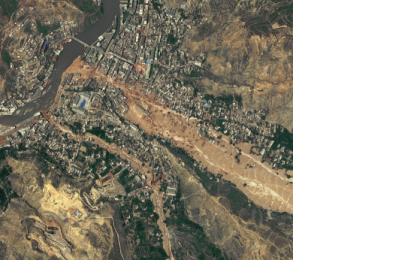After the 7.0 magnitude earthquake which shook southwest China's Sichuan Province on Saturday morning, the People's Liberation Army (PLA) Chengdu Military Area Command (MAC) set up for quake rescue and relief. The disaster managers were able to make timely and effective decisions in their relief efforts due to modern military technologies such as satellite navigation, as China's official news agency Xinhuanet reported.
The head of the rescue headquarters of Chengdu MAC, Zhou Xiaozhou, said that in order to monitor the situation of Lushan County - the earthquake's epicenter and a remote mountainous region - the PLA Navy sent out its remote sensing aircrafts from the base in Sichuan shortly after the quake: "From these high resolution pictures taken from the air, we can tell where there are landslides, which roads are blocked and which parts are damaged most." On Tuesday morning, the quake itself has left 193 dead, 25 missing and 12,211 injured.
Moreover, BeiDou Navigation Satellite System (BDS) as China's homegrown satellite navigation has helped land rescuers to communicate among each other and with the headquarters. By 2020, BDS is also expected to cover the globe with a constellation of over 30 satellite.

